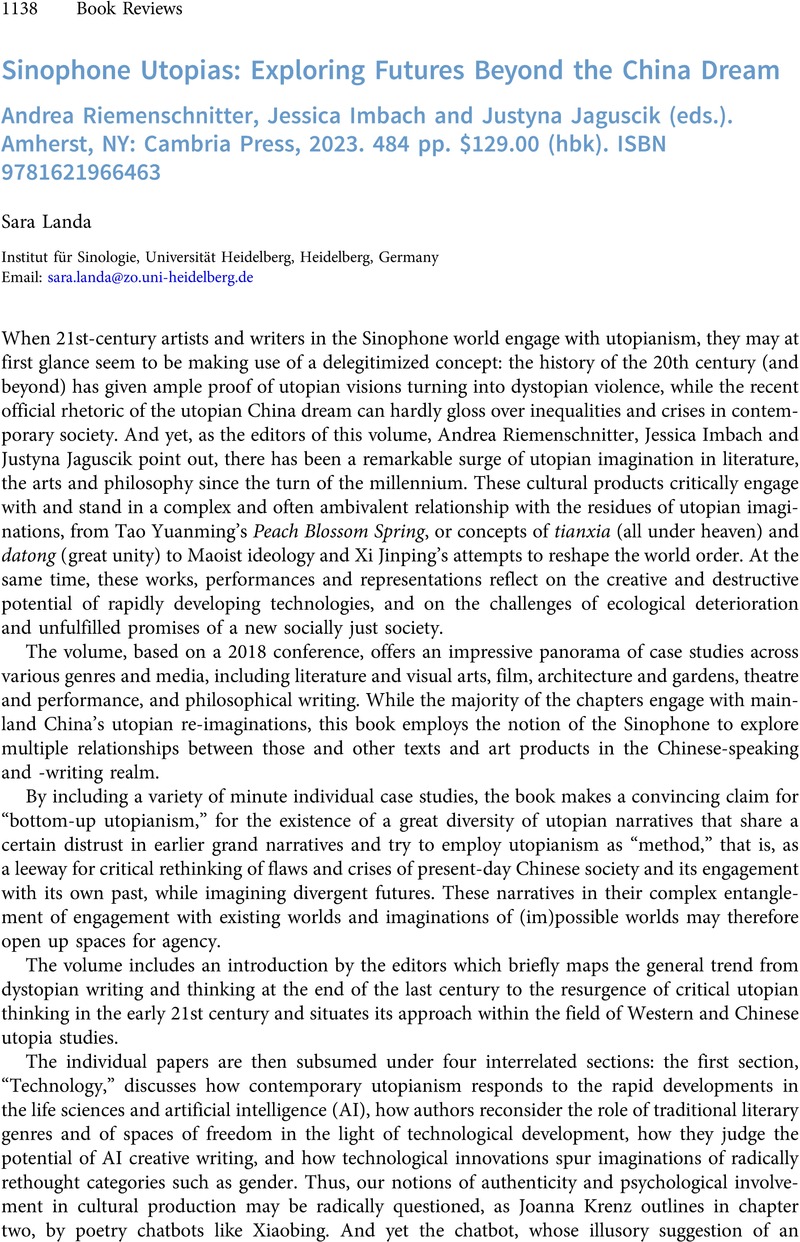No CrossRef data available.
Article contents
Sinophone Utopias: Exploring Futures Beyond the China Dream Andrea Riemenschnitter, Jessica Imbach and Justyna Jaguscik (eds.). Amherst, NY: Cambria Press, 2023. 484 pp. $129.00 (hbk). ISBN 9781621966463
Review products
Sinophone Utopias: Exploring Futures Beyond the China Dream Andrea Riemenschnitter, Jessica Imbach and Justyna Jaguscik (eds.). Amherst, NY: Cambria Press, 2023. 484 pp. $129.00 (hbk). ISBN 9781621966463
Published online by Cambridge University Press: 06 November 2023
Abstract
An abstract is not available for this content so a preview has been provided. Please use the Get access link above for information on how to access this content.

- Type
- Book Review
- Information
- Copyright
- Copyright © The Author(s), 2023. Published by Cambridge University Press on behalf of SOAS University of London



